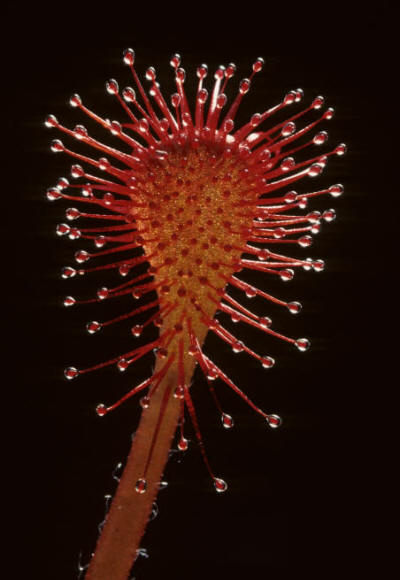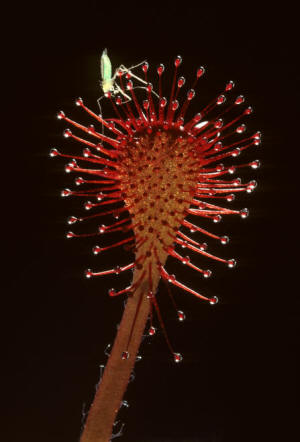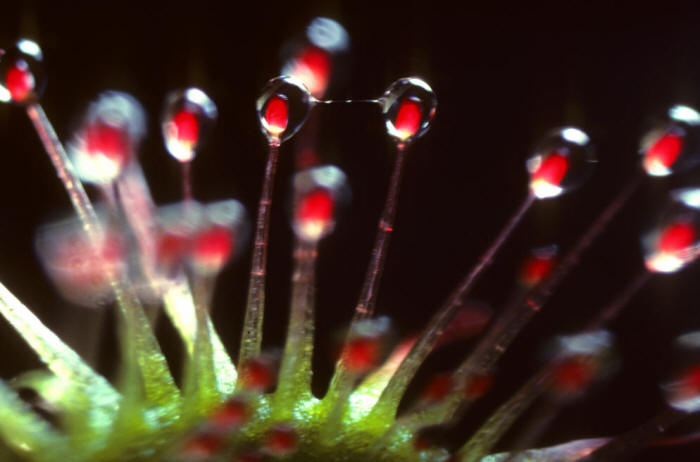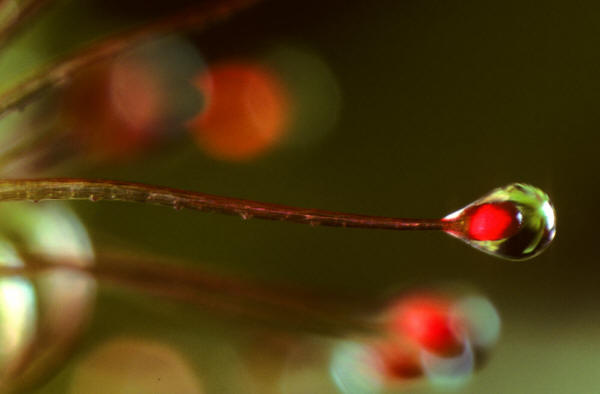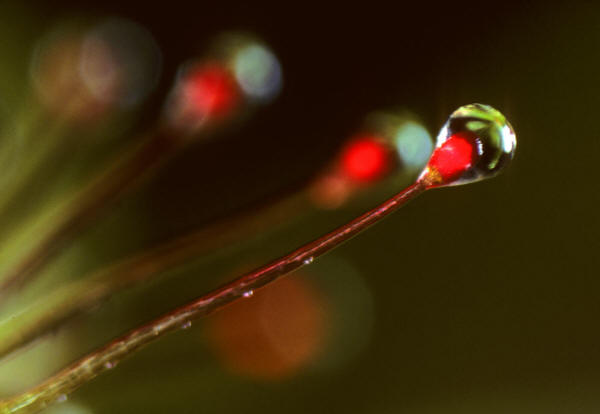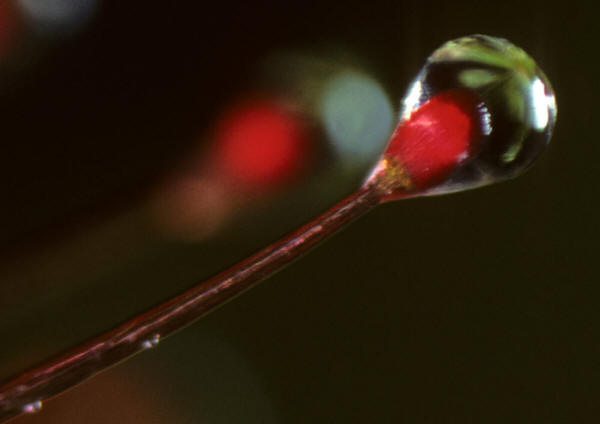|
Carnivorous Plants Story
|
||
|
|
Drosera capillaris ature, as well as in cultivation, flies, ants, and spiders are a typical meal for the Venus flytrap. A nectar band just below the marginal spines creates an irresistible lure for the potential prey. Because of the stiff spines around the lobe, it is impossible to lick the nectar from outside.
Showing the marginal tentacles of Drosera capensis, the longest and most agile of all tentacle groups on the sundew leaf ature, as well as in cultivation, flies, ants, and spiders are a typical meal for the Venus flytrap. A nectar band just below the marginal spines creates an irresistible lure for the potential prey. Because of the stiff spines around
The nectar seeker is forced to position itself between the trap lobes. Three pairs of innocuous-looking bristles grow on the inner surface of the lobes. The visitor to the Venus' diner has no way of knowing what will precipitate if these sensitive hairs are disturbed.
As the digestive process progresses, the products of digestion are swiftly absorbed through the leaf and are carried away to the other parts of the plant.
Introduction Venus Flytrap Sundews Pitcher Plants Cobra Plant Butterworts Bladderworts
|
|
